What separates those who catch trout in moving waters from those who don’t usually isn’t casting skills, better equipment or the ability to "match the hatch." It’s knowing how to read the waters they’re fishing. As a result, they spend considerably more time fishing those parts of the stream that hold fish than those that don’t. As a wise man once said, "If you want to pick apples, you have to go where the apple trees are."
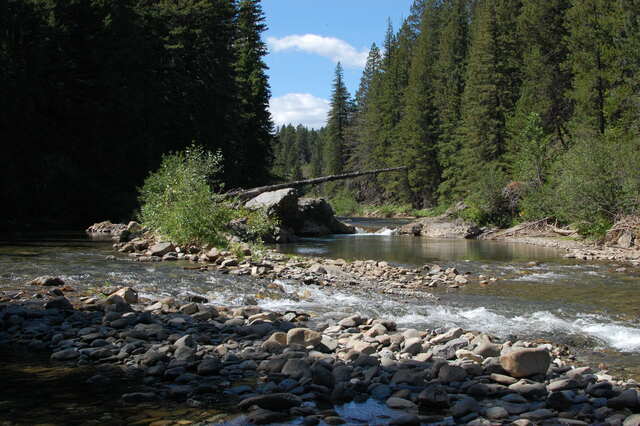
Learning to dissect a stream and identify those waters most likely to hold trout gives you a decided advantage.
The concept sounds obvious, but what does it mean when you’re on the water? To begin, it means ignoring all but the best stretches of water. In some cases that requires wading hundreds of metres between casts, turning a cold shoulder to less than ideal stretches where poking and prodding might rise a trout or two; more time fishing the best water and less time fishing marginal water translates into more fish hooked.
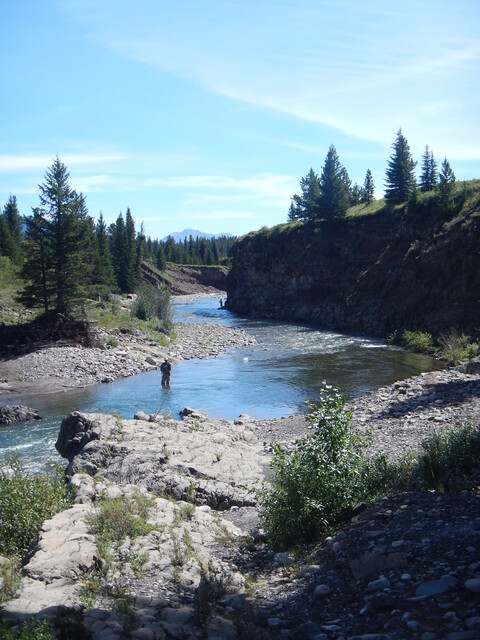
Move quickly between good water; don’t waste time on water less likely to hold fish.
Understanding what constitutes quality trout habitat means understanding their requirements. Trout select for three features - relief from strong currents, protection from predators, and easy access to food. Survival and growth for them means getting the most food with the least effort, all while minimizing their exposure to danger. The very best lies will have all of these characteristics, but often trout change lies through the day to meet one or more of these requirements.
It’s not often that trout will "hunt" for food; most times they let it come to them. The nature of streams is that they’re natural conveyor belts, drifting a steady flow of food downstream, and trout position themselves to intercept whatever’s on the menu. The strongest currents generally carry the most food and, in the majority of streams, trout will move out into the fast water at some point through the day. Current velocity dictates how long a trout will stay in any given lane; too fast and the trout expends more energy than it receives from the food it consumes. Often the best feeding locations are in moderately-paced currents.
So, when an angler wants to focus their fishing time in the stretches that hold the most fish, it’s important they know what type of water to look for. While there’s a huge science devoted to breaking down and describing streams into their component parts, trout anglers only need to understand it at a broad scale. Following are some of the key trout-holding waters to focus on:
Pools
Pools are easily identifiable in most streams, and are characterized by deeper, calmer water. They’re most often found below natural drops in the stream, or where the stream bed takes a significant turn. Pools, meanwhile, can be subdivided into three broad sections - the head, the center and the tail. While the centre of the pool often looks most inviting, it’s the area least used by trout because the calm waters of the center expose them to danger, particularly from above. Trout most often position themselves in the mid-pool only when there’s an active hatch occurring; even then they’ll generally wait until dusk before taking the risk.
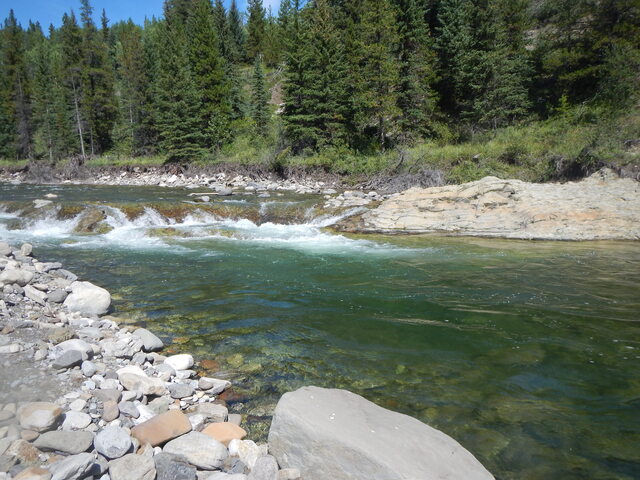
Pools offer some of the most obvious and productive trout-holding water.
The head of a pool is often a choice trout location. It offers a natural escape from currents and the water tumbling down into the pool offers protection from the eyes of predators. Further, trout positioned at the head get first crack at foods swept into the pool from above. For fly-fishermen, the head is a choice location for nymphing, replicating the subsurface insect stages that tumble downstream before settling into the deeper water of the pool. Dry fly anglers, too, can have success and should cover pool headwaters thoroughly.
The tail of a pool is an often-overlooked stretch of water that can hold significant numbers of fish. Too often, inexperienced anglers rush to the center or head first, spooking trout holding in the tail and upsetting the entire pool. Take your time and fish the tail carefully, and first, before moving up. Trout will feed in remarkably shallow water at the tail of a pool, particularly when taking food off the surface.
Seams
Seams, or edges, are where two currents meet. Trout will situate themselves along the edge in the calmer of the two currents, zipping out into the faster section to pick up a quick meal before darting back to the slower side. Present your fly or lure as close to the seam edge, on the fast side, as you can.
Riffles
Riffles are really just little rapids, often a result of a narrowing or broadening of the stream channel, and can be productive trout water. The choppy surface helps trout feel secure, and rocks and other bottom structure give them a place to get out of the current. Riffles are prime locations for actively feeding trout, and are always worth covering thoroughly.
Banks
Undercut banks provide the best of all worlds for trout. They offer cover from above, are generally out of the fast current, yet have easy access to currents and prime feeding opportunities. Fly-fisherman can enjoy success by working streamers along undercut banks, as can traditional anglers when casting spinners. If you want to fish dry flies, remember to present them a couple feet out from the bank, as trout holding in an undercut often can’t see the water’s surface immediately adjacent to the bank.
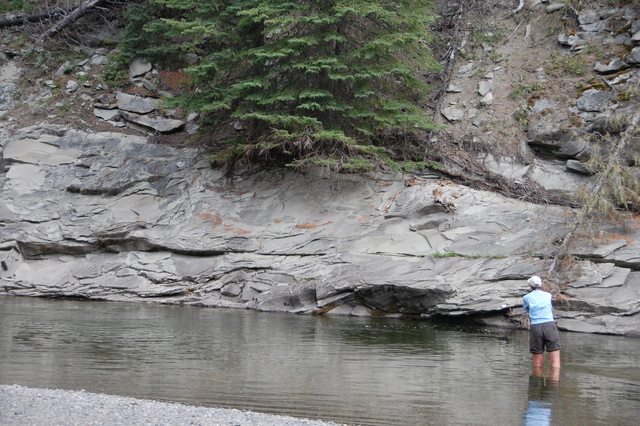
Trout love to hide below undercut banks.
Instream Structure
These are often rock ledges, boulder piles, or fallen trees. All create slow water adjacent to quicker water, and as we know that can be a magnet for hungry trout. Often these obstructions create a back eddy, so it pays to fish both sides of the obstruction, not just along the fast water side.
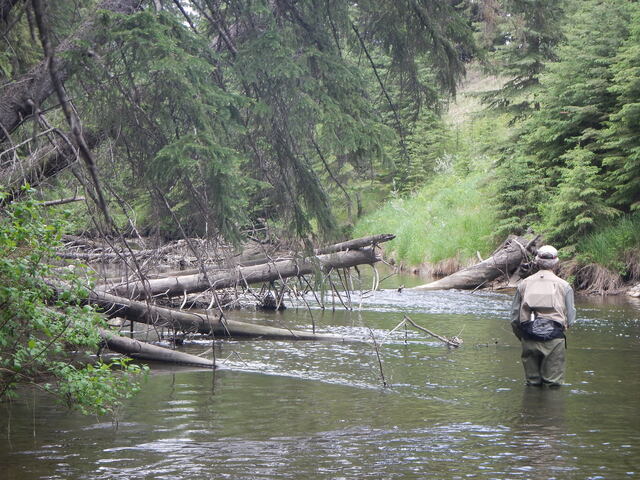
Cast thoroughly around deadfall; trout will hold wherever there’s a break from the current and a ready food supply.
Rocks
Mid-stream rocks often hold trout, offering them a lie that provides protection from faster current. The way foods travel around these midstream obstructions, however, can vary greatly from location to location. As a result, don’t spend a lot of time fishing these sites; many that look "fishy" just don’t hold trout. If you don’t get a take after a two or three well-placed casts, move on.
Runs
A run is generally located downstream of a rapid or riffle. The surface looks "slick," but you can tell the water is relatively deep, a result of currents digging down into the stream bed. Slow-moving runs can be extremely productive and are especially popular with dry-fly fisherman. The calmer surface water allows trout holding at the bottom to see insects floating downstream.
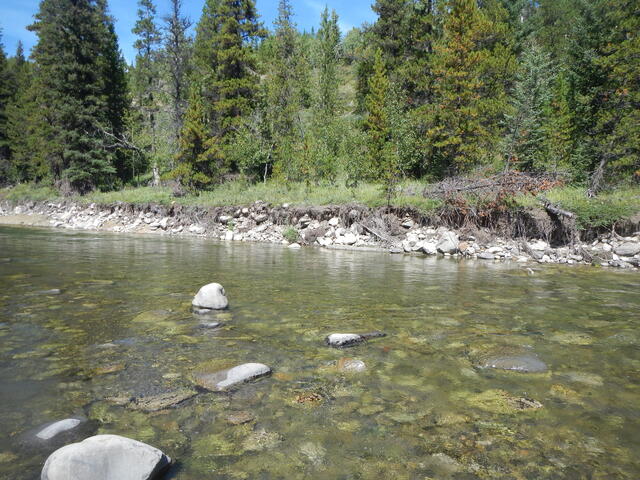
Runs, or slicks, are prime micro habitats that invariably hold trout.
Trout will use just about every aspect of their stream homes at one time or another. This is particularly true in low-light conditions and on overcast days, when they feel less exposed to predators.
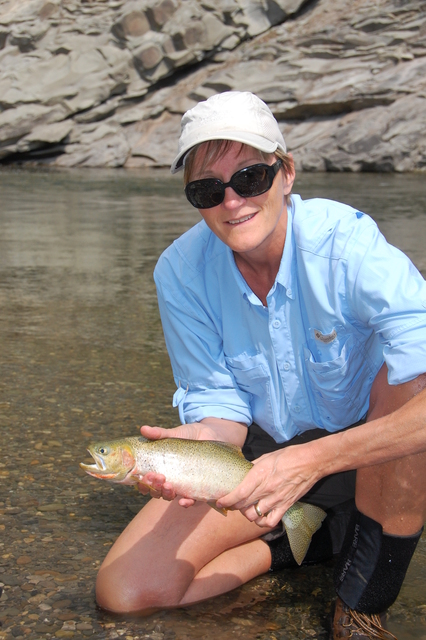
Reading water is key to consistently catching fish.
They are, however, relatively predictable in how, when and where they utilize the habitat available to them. Learning to identify what microhabitats they use in streams allows you to maximize your fishing time in the most productive waters. In the end, that means less prospecting. And a whole lot more fun.

